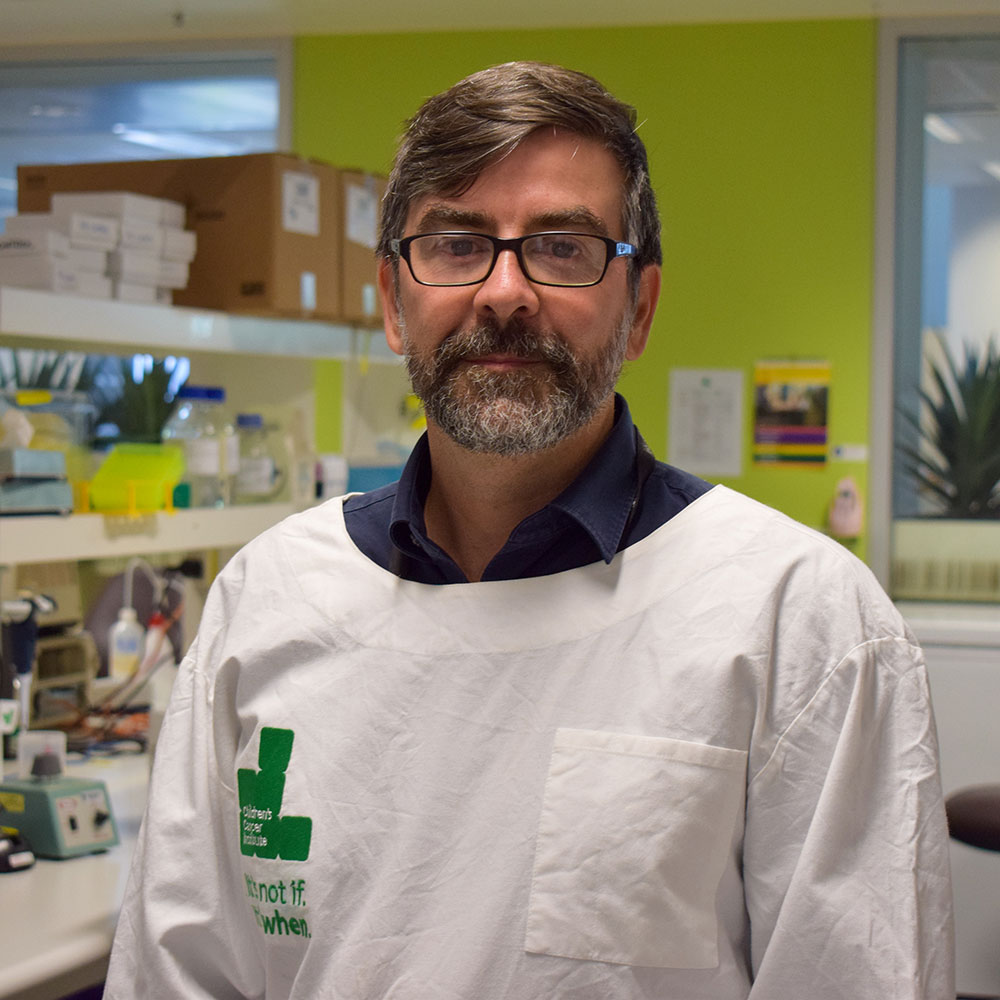Australian researchers have discovered a new way to target an aggressive childhood cancer, neuroblastoma, one of the most common and dangerous cancers in young children.
The discovery may also have important implications for some other aggressive cancers in children, including certain brain tumours, as well as some adult cancers, including ovarian and prostate cancer.
The new research, led by scientists at Children’s Cancer Institute and published in Nature Communications, has discovered that a cellular protein called ALYREF plays a crucial role in accelerating the effects of the cancer driver gene, MYCN, in neuroblastoma.
Scientists have known for some time that the one third of children with neuroblastoma who have very high levels of MYCN in their cancer cells have a much poorer prognosis. However, MYCN has proven to be an unreachable target for drug design. Instead, scientists have turned their attention to finding other molecules that work in close partnership with MYCN.
In the new research, Children’s Cancer Institute scientists have shown that MYCN depends on ALYREF to drive the growth of neuroblastoma cells. According to Dr Zsuzsi Nagy and lead researchers Professor Glenn Marshall AM and Dr Belamy Cheung, this is a world-first discovery.
“We have been able to show for the first time that ALYREF binds to and actually controls MYCN function in neuroblastoma cells,” explains Professor Marshall. “This means we now have a new molecule that we can target… a new way to get at MYCN and stop it from driving aggressive cancer growth.”
Working with neuroblastoma cells, Professor Marshall and his team found that ALYREF bound to MYCN directly to switch on another protein, USP3, which prevents MYCN being degraded. This maintains the extremely high levels of MYCN needed to drive the cancer, and so acts as an accelerant. These findings strongly suggest that ALYREF inhibition could interrupt this cycle and prove to be a very valuable new therapeutic strategy for high-risk neuroblastoma.
The next step will be to develop a potent and specific ALYREF inhibitor – a drug capable of inhibiting the actions of this molecule − and to test this in laboratory models
“This research provides new knowledge as a basis for drug discovery,” said Dr Cheung. “Once we find a suitable drug candidate, we can take this to clinical trial in children with high levels of MYCN and ALYREF in their tumours.”
Excitingly, targeting ALYREF may also prove to be a useful therapeutic strategy for other types of cancer which, like high-risk neuroblastoma, are known to be MYCN-driven. These include blood cancers, medulloblastoma, glioblastoma, retinoblastoma, ovarian cancer, Wilms’ tumour, and neuroendocrine prostate cancer. Further research will be needed to explore this potential.
This work was supported by Program Grants (Prof Glenn Marshall) from the National Health and Medical Research Council (NHMRC) Australia (APP1016699), Cancer Institute NSW (10/TPG/1-13), Cancer Council NSW (PG-11-06). This work was also supported by NHMRC Project grant APP1125171 and Neuroblastoma Australia (Prof Glenn Marshall and Dr Belamy Cheung). Funding from the Victorian Government Operational Infrastructure Support Scheme to St Vincent’s Institute is acknowledged. The authors acknowledge the Steven Walter Children’s Cancer Foundation for their continuous support. The authors also acknowledge the support from the University of New South Wales Centre for Childhood Cancer Research, UNSW Sydney, Sydney, NSW, Australia. Prof Michael Parker is a National Health and Medical Research Council of Australia Research Fellow.
Media Contact:
Ashleigh Addison, Uptown Communications
0418 274 428
ash@uptowncomms.com
About Children’s Cancer Institute
Originally founded by two fathers of children with cancer in 1976, Children’s Cancer Institute is the only independent medical research institute in Australia wholly dedicated to research into the causes, prevention and cure of childhood cancer. More than 40 years on, our vision remains unchanged – to save the lives of all children with cancer and to eliminate their suffering. The Institute has grown to now employ over 300 researchers, operational staff and students, and has established a national and international reputation for scientific excellence. Our focus is on translational research, and we have an integrated team of researchers and clinician scientists who work together in partnership to discover new treatments which can be progressed from the lab bench to the beds of children on wards in our hospitals as quickly as possible. More at www.ccia.org.au














